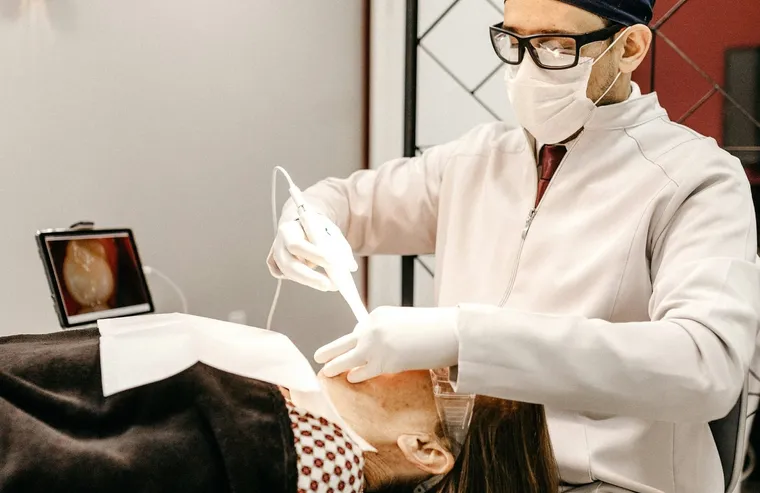As we age, the skin naturally loses its elasticity, leading to sagging and wrinkles, particularly around the jawline, neck, and cheeks. For seniors looking to combat these visible signs of aging, a mini facelift offers a less invasive and highly effective solution. This procedure provides rejuvenation with a more subtle result than a traditional facelift, making it ideal for older adults seeking improvement in their appearance without extensive recovery.
The mini facelift targets specific areas of the face where aging is most apparent, including the lower face and neck. It involves less downtime and smaller incisions compared to a full facelift, making it a popular choice among seniors. This article will explore the benefits, procedure details, and pricing of a mini facelift, and how it can restore a youthful, natural-looking appearance.
What is a Mini Facelift?
A mini facelift, also known as a “short-scar facelift,” is a cosmetic procedure designed to lift and tighten the skin, particularly around the lower face and neck. Unlike a full facelift, which addresses the entire face, a mini facelift focuses on rejuvenating specific areas with smaller incisions, usually near the ears or hairline. This method is less invasive, offering significant improvement in facial appearance while preserving a natural look.
The mini facelift procedure typically targets the jawline, neck, and cheeks to eliminate sagging skin and tighten underlying muscles. For seniors, it’s an ideal option for those experiencing mild to moderate signs of aging. This procedure is generally performed under local anesthesia with sedation, offering a quicker recovery time and less risk than more invasive surgeries.
Benefits of a Mini Facelift for Seniors
A mini facelift offers several advantages, especially for seniors looking to enhance their appearance with minimal disruption to their lives. Here are some key benefits:
1. Subtle, Natural Results
One of the main appeals of a mini facelift is the natural-looking results. Since it focuses only on the lower half of the face, it restores a youthful appearance without overdoing it. Seniors often prefer this subtle approach, as it enhances their features without making them look unnatural or overly “tight.”
2. Less Invasive with Faster Recovery
Compared to a traditional facelift, a mini facelift requires smaller incisions and less tissue manipulation. This makes the procedure less invasive, with significantly less bruising and swelling. Most patients experience a quicker recovery time, often returning to their normal activities within a week or two. For seniors who may not want to endure a long recovery period, this is a major advantage.
3. Long-Lasting Results
While the mini facelift doesn’t offer the same long-lasting results as a full facelift, it still provides long-term benefits. With proper care and maintenance, the results of a mini facelift can last anywhere from 5 to 10 years. For seniors, this means a rejuvenated appearance with lasting effects without needing to undergo frequent treatments.
4. Enhanced Confidence
A mini facelift can have a significant impact on a person’s self-esteem. Restoring a youthful appearance can help seniors feel more confident in social settings and improve their overall sense of well-being. The procedure offers an opportunity to feel refreshed and revitalized, helping individuals regain a more vibrant version of themselves.
5. Minimal Scarring
The small incisions used in a mini facelift are typically hidden in the natural creases around the ears or hairline, making scarring minimal. The discreet location of the incisions ensures that scarring is often barely noticeable, providing a more aesthetically pleasing result.
Procedure Details of a Mini Facelift
The mini facelift procedure typically lasts between 1.5 to 2.5 hours, depending on the complexity of the surgery. Here’s a breakdown of the procedure:
- Consultation: The first step is a consultation with a qualified surgeon, where the patient’s health, facial structure, and aesthetic goals are evaluated. The surgeon will also discuss any concerns and expectations.
- Anesthesia: Local anesthesia with sedation is usually administered for comfort. The patient remains awake but relaxed during the procedure.
- Incision: Small incisions are made, usually around the ears or hairline. The surgeon carefully lifts and tightens the skin, removing excess tissue or fat where necessary.
- Muscle Tightening: The underlying muscles may also be adjusted to provide a smoother contour. This is particularly effective in addressing jowls or sagging around the neck.
- Closure: Once the skin is repositioned, the incisions are closed with sutures, often dissolvable or removable after a few days.
- Recovery: After the procedure, patients are typically able to go home the same day. Swelling and bruising are common but generally subside within a week. The majority of patients can return to normal activities after about 7-10 days, with full results visible within a few months.
Pricing of a Mini Facelift
The cost of a mini facelift can vary depending on factors such as the surgeon’s experience, geographic location, and the complexity of the procedure. On average, the cost of a mini facelift ranges from $4,000 to $7,000. This price generally includes the surgeon’s fee, anesthesia, facility costs, and post-operative care. However, it’s important to note that insurance typically does not cover the cost of cosmetic procedures like a mini facelift, so patients should plan accordingly.
Some surgeons offer financing options, which can help make the procedure more accessible. It’s always a good idea to inquire about payment plans or third-party financing to manage the costs.
Conclusion
A mini facelift offers seniors an effective, minimally invasive way to address the signs of aging. With subtle, natural results, less downtime, and long-lasting effects, it’s no surprise that this procedure is gaining popularity among older adults. Whether you’re looking to tighten sagging skin, restore youthful contours, or boost your confidence, a mini facelift can help rejuvenate your appearance. If you’re considering the procedure, consult with a board-certified surgeon to determine if it’s the right option for you.

